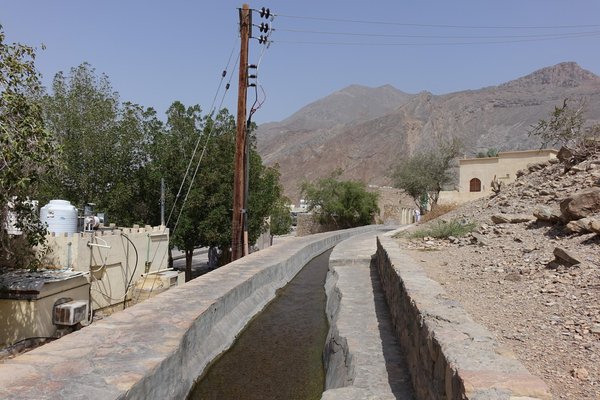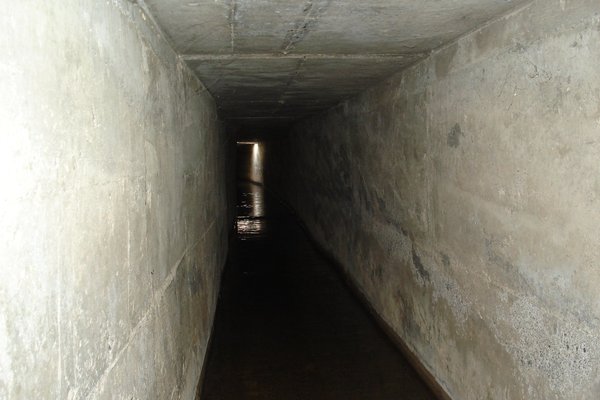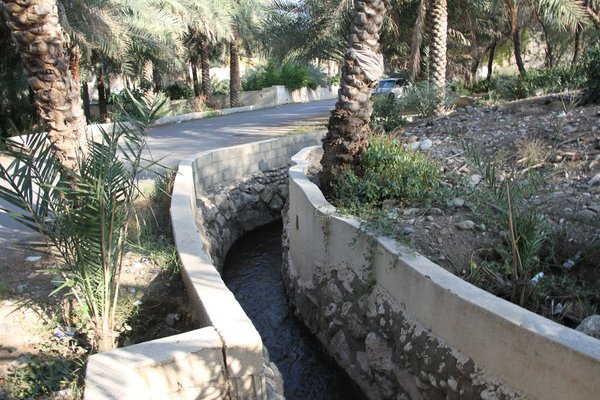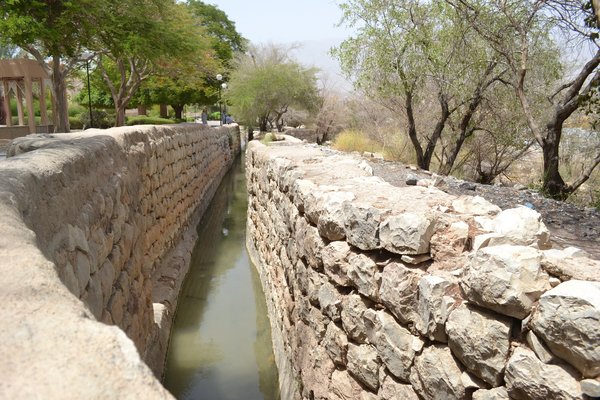Oman
Aflaj irrigation system
The Aflaj Irrigation Systems of Oman comprise five of the some 3,000 still functioning complete settlement irrigation systems in the country.
The sites represent a well-preserved form of traditional use of shared water resources in a desert environment. The Aflaj are mainly used to make the cultivation of date palms possible. They are managed by long-standing traditional systems within the communities they serve.
Community Perspective: Aflaj can be seen in many of Oman’s towns and villages, but of the inscribed five the one in Nizwa is the most convenient to visit. The aflaj in Birkat-al-Mouz has the benefit of introducing you to traditional village life.
Site Info
Official Information
- Full Name
- The aflaj irrigation system (ID: 1207)
- Country
- Oman
- Status
-
Inscribed 2006
Site history
History of Aflaj irrigation system
- 2006: Advisory Body overruled
- ICOMOS advised Referral, for better protection and management plan
- 2006: Inscribed
- Inscribed
- Type
- Cultural
- Criteria
- v
Links
- UNESCO
- whc.unesco.org
- Official
-
- omanwhs.gov.om — Aflaj irrigation system
- Related
-
- ardmediathek.de — Video: Schätze der Welt
All Links
UNESCO.org
- whc.unesco.org — whc.unesco.org/
Official Website
- omanwhs.gov.om — Aflaj irrigation system
Related Resources
- ardmediathek.de — Video: Schätze der Welt
News Article
- Dec. 1, 2013 omantribune.com — Rain damages Al Muyassar falaj
Community Information
- Community Category
- Secular structure: Civic and Public Works
Travel Information
Muscat hotspot
Recent Connections
-
Cultural landscape not recognized
ICOMOS: "The wider nomination should be… -
Sundial
At Falaj Al-Muyassar -
Palm Groves
Crit v The collection of Aflaj irrigati…
Connections of Aflaj irrigation system
- World Heritage Process
-
-
Cultural landscape not recognized
ICOMOS: "The wider nomination should be considered as a collection of cultural landscapes representing distinctive, long-standing, sustainable and living ways of managing water resources" -
Inscribed on a single criterion only
v. to be an outstanding example of a traditional human settlement, land-use, or sea-use which is representative of a culture (or cultures), or human interaction with the environment especially when it has become vulnerable under the impact of irreversible change
-
- Human Activity
-
-
Palm Groves
Crit v The collection of Aflaj irrigation systems represents some 3,000 still functioning systems in Oman. Ancient engineering technologies demonstrate long standing, sustainable use of water resources for the cultivation of palms and other produce in extremely arid desert lands. -
Irrigation and drainage
-
- Timeline
-
-
Built in the 6th century
The age of the 5 designated falaj is unknown, though "The present network appears to result from several building campaigns, the earliest of which could be around 500 AD" (AB ev)
-
- WHS Hotspots
-
-
Muscat hotspot
There are aflaj in Nizwa: 156km
-
- Visiting conditions
News
- omantribune.com 12/01/2013
- Rain damages Al Muyassar falaj
Recent Visitors
Visitors of Aflaj irrigation system
- 2Flow2
- Adrian Turtschi
- Afshin Iranpour
- Alexander Barabanov
- Alexander Lehmann
- alicemears
- Ali Zingstra
- Ask Gudmundsen
- Atila Ege
- BaziFettehenne
- Bill Maurmann
- Bin
- Boj
- Bram de Bruin
- Cheryl
- chiuliqi
- Christoph
- Christravelblog
- Claire Bradshaw
- Clyde
- Csaba Nováczky
- czesioszpachelka
- Dimitar Krastev
- Els Slots
- Erik Jelinek
- Eva Kisgyorgy
- Evgenii
- Fan Yibo
- Femke Roos
- Fmaiolo@yahoo.com
- Frederik Dawson
- futtaimhb
- George Gdanski
- Grzegorz Andruszkiewicz
- Hammeel
- Harry Mitsidis
- henryjiao18
- Iain Jackson
- Ivan Rucek
- janameerman
- Janos
- Jarek Pokrzywnicki
- Jasam
- Jawnbeary
- jballard650
- Jean Lecaillon
- Jeanne OGrady
- João Aender
- jonathanfr
- Jon Eshuijs
- Karito Vies
- Kbecq
- KentishTownRocks
- Kjlauer
- Kurt Lauer
- Laurine
- Loic Pedras
- Luis Filipe Gaspar
- Luke LOU
- Maciej Gil
- Maja
- Malgorzata Kopczynska
- marcel staron
- MarcoB_0
- Martina Rúčková
- Mihai Dascalu
- Mikan22
- Mikko
- Milan Jirasek
- Miloš Tašković
- MMM
- Monica66
- Nihal Ege
- Patrik
- Patrik_globe
- PeterH
- Philipp Leu
- Philipp Peterer
- Pieter Dijkshoorn
- Piotr Wasil
- Rachel Perkins
- Rahelka
- Randi Thomsen
- Rick Ohm
- Rob Wilson
- Roger Ourset
- Roman Bruehwiler
- Roman Raab
- Sergio Arjona
- Slavi
- Solivagant
- Stanislaw Warwas
- Svein Elias
- Szucs Tamas
- Tamara Ratz
- Taotao Chen
- Tarquinio_Superbo
- Thomas Buechler
- Thomas van der Walt
- Truls Brekke
- Vanessa Buechler
- Vincent Cheung
- Walter
- Wojciech Fedoruk
- Yongcheng Liu
- Zach
- Zizmondka
- Zoë Sheng
Community Reviews
Show full reviews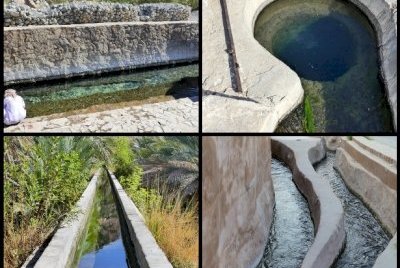
I visited 4 out of the 5 locations of this WHS on different days (sometimes doing repeat visits too) in December 2020 and January 2021. Although I had already seen some aflaj in the United Arab Emirates while visiting the Al Ain WHS, the aflaj in northern Oman are a much more elaborate irrigation network which was critical to the development of society and the agricultural economy.
Each falaj gathers water from one or more sources and channels it via a single canal into the area where it is to be used. From the canal, the water is diverted into subcanals into the fields where it sustains the tropical fruit which grows in Oman. Even though today concrete has been used to make the aflaj deeper or to extend the old network, this does not take away the remarkable engineering skills needed in ancient times to construct the aflaj, which supply water on a continuous basis in Oman's arid environment. Recently at Salut (a tentative WHS I'll review later), archaeologists has recently excavated what is believed to be the oldest known falaj out of the approximately 4100 aflaj in Oman today, of which just over 3000 are still functioning.
The water for these aflaj comes from 3 different source types: daudi (which use the underground water table to create water flow through a tunnel to its point of use), ghaili (where the surface water mostly from floods flows into wadis that are dammed and the water is diverted …
Keep reading 0 comments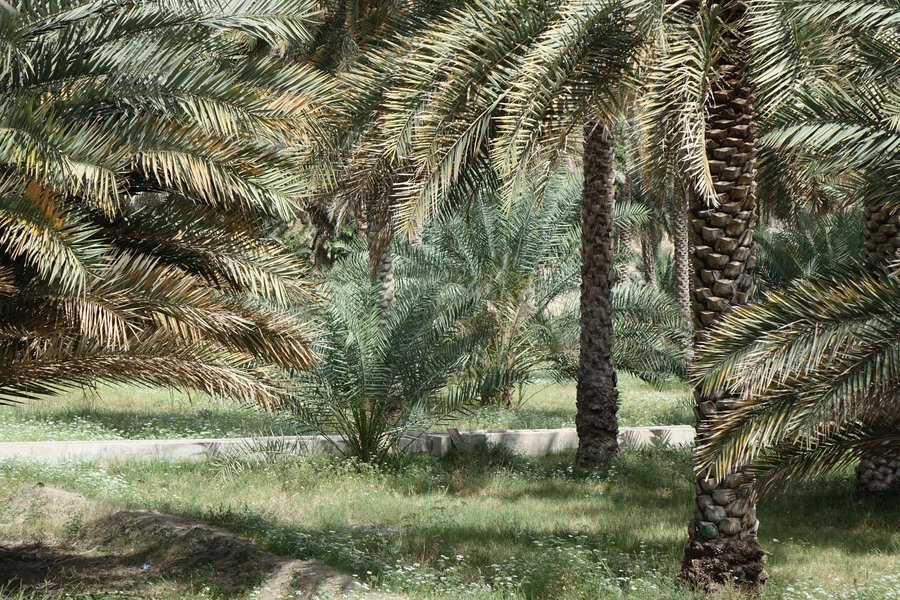
The Aflaj are as typical of Oman as its fortresses. Nearly every village or town with roots older than Sultan Qaboos’s reign has such a falaj irrigation system. A combination of 5 out of the more than 3,000 still functioning systems has been declared a World Heritage Site. Of these 5, I visited the ones in Birkat Al-Mouz (Falaj Al-Khatmeen) and Nizwa (Falaj Daris). To both, there is no formal access; they just lie in public areas.
The town of Birkat Al-Mouz is conveniently located en route between Muscat and Nizwa. When I parked my rental car at the local fort, I was immediately approached by a man in a 4x4 who asked whether I wanted a tour of the nearby mountain Jebel Akhdar. The "green mountain" is rather dry at this time of year, so I let that opportunity pass me by. For most tourists, however, the mountain is a bigger attraction than a falaj.
The downhill stream of the Falaj Al-Khatmeen is easy to follow in Birkat Al-Mouz. It first appears above ground at the back of the Bait al Radidah fortress. Then it flows past the mosque, where there are also ablution spaces using the falaj (they look like dressing rooms or public toilets). Next to it is the WHS marker: a square column with the inscription text in 4 languages - Arabic, English, German, and (I am not sure about this one) French. Later in the day, I encountered the same style of marker at Falaj …
Keep reading 0 comments
I was the Resident Architect for the new Souq in Nizwa from 1990-1992, working for CowiConsult. Marfa Daris Park began as a provisional sum in a local roads improvements contract, and I was given the opportunity to come up with a design and oversee the construction of the park.
We had some prior experience for this, having designed a "pocket park" at the base of the new road bridge upstream from the souq. Up to that time the local kids had never seen play equipment, and it was very popular.
The design philosophy for Marfa Daris Park recognised its importance as a historic stopping point on the former Frankincese Trail, a place of religious significance long before there was a local mosque, where the broad steps down to the falaj were used for washing prior to prayers on a level area of stony ground adjacent. The same point, close to the emergence of the falaj out of the main wadi bed, was also a place of great cultural significance: HM Sultan Qaboos would often make stops there to show visiting dignitaries the falaj and explain its importance.
The masterplan for the park was an outcome of its geography, the religious and ceremonial importance, and the need for a local park that would be popular with the local populace. Falaj Daris itself forms the boundary to the main wadi, with a meandering path alongside that loops up to an elevated bandstand on a prominence at the western end of the park.
…
Keep reading 0 comments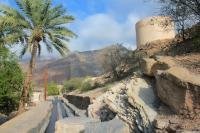
On a trip to Oman in December 2012, I managed to visit 4 of the 5 aflaj irrigation systems on the list (I arabic, aflaj is the plural form of falaj). 3 of them are close to Nizwa, a good base to visit the area.
The irrigation system is composed of three elements, all three part of the listed proprety : first the upstream part (collection of groudwater or spring waters) that are drawn into collecting channels, mostly underground. Then a main channel (the shari’a) is usually open surface. Finally, downstream, an agricultural area irrigated by smaller irrigation channels.
As the sources and collectioning channels are mostly underground, there is not much to see. The shari’a is usually easy to spot. And the agricultural area and the irrigating channels are in large green areas dotted with villages houses and small roads forming a labyrinth in which it is really easy to get lost.
I found it very useful to print the maps in the nominating papers to find my way to the aflaj (even if the map of Falaj Al-Khatmeen is wrong, and the nominated area do not match the underlying map).
Falaj Daris (Nizwa) is easy to find. It is is clearly signposted a few kilometers north of Nizwa town. (It is not signposted if you drive in the opposite direction). There is a park next to the shari’a, popular with local resident for afetrnoon walk. This aflaj is one of the largest and oldest in Oman. It might …
Keep reading 0 comments
Driving from Muscat, the capital city of Oman, to the city of Nizwa was my first time to see Middle East desert environment, I was shocked to witness how dry of the landscape could be, all red lands and dark mountains looked like they had been burned by fire with no single tree or a sign of life except fast driving cars on the road. The desert environment was far worse than deserts in China or Uzbekistan. Then I started to saw communities in the valley along the dry rivers called “Wadi” at first, I understood that the villages survived by seasonal water from the river, but when I visited these villages, it was falaj system that supplied water to the communities.
During my Oman trip I saw Omani Aflaj in many towns and villages, but for UNESCO listed ones, I only saw Falaj Daris in Nizwa which was the biggest falaj in the country and its water sources were just outside the city center on the way along old Nizwa – Bahla road. However, I could not see falaj sources as they were underground, also aboveground were incredibly dry riverbed and full of rocks and gravels that seem to be impossible to have water tunnels underneath such unfriendly terrain. Falaj first appeared aboveground in the newly created park just outside Nizwa next to the dry river. Its appearance was like a small canal with stone wall that covered with mortar. The canal continued into the residential zone and …
Keep reading 0 comments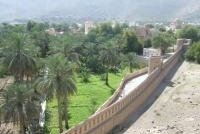
Of all the aflaj in Oman and the UAE, only one that I saw in 2010 is included in this WHS. That is the falaj al Muyassar that flows through Rustaq, and beneath the fort (on WH tentative list). The portion I have seen flows through a date plantation, then beneath the fort, and in an open channel out into Rustaq village. It then continues in an open channel through the village.
In 2011, while staying in Nizwa I visited several others, at Falaj Daris, at a spot where steps are provided for washing prior to attending mosque. The Falaj Al-Khatmeen was easily located at Birkat Al Mawz in a date plantation adjacent to the fort. Less easy to find was Falaj Al-Malki, located in what is now a new housing estate. It was not in a very clean state either.
Keep reading 0 comments
Most Omani villages possess a falaj irrigation system which collects and distributes water from source to houses and fields. Their origin dates back centuries and they are a central aspect of Omani agriculture and social organisation. However when I saw that “A Falaj system” was on Oman’s Tentative list I had little hope that a single one chosen from among the c3000 in the country would be one that I had seen in 2005! It then appeared that the T list actually called it “Aflaj systems of Oman” and that “aflaj” is the plural – so it was the entire concept which was being proposed! In the event Oman chose 5 such systems as representative of the country’s entire stock and luckily – yes, we had visited 1 of those chosen – the Falaj Daris at Nizwa (photo)
Nizwa has a population of around 60000 and is a tourist center - this, more than the example itself, may have had something to do with the selection (which also increases to 3 the number of WHS within a short drive of this town!). The system is 8 kms long and, as is the way with aflaj, much of the channel from the source is underground (There are 3 types of Falaj and Nizwa’s is a Daoudi which taps into underground water as opposed to using a spring, river or dam. Where the water appears from the tunnels for distribution is called the shari’a and, in Nizwa, a small park has been …
Keep reading 0 comments
